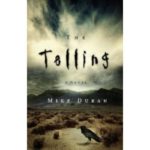Fantasy and The Depiction Of Evil
“Reality fiction” (as opposed to speculative) requires evil to show up in a known form. The protagonist faces opposition, from things outside himself and from his own wayward heart. The inward conflict in fantasy may look much the same as that in reality fiction, but the external conflict may be considerably different. In this difference lies fantasy’s strength.
External conflicts in reality fiction center on day to day problems: a cheating spouse, job stress, disobedient children, and such. Or on day to day disasters: child abuse, pornography, Internet predators, drugs abuse, serial marriage, same sex marriage, child sex slaves, gang violence, homelessness.
For argument’s sake, suppose a Christian author decides to write about child sex slaves. Does he present Christ as the answer to the conflict he paints? Or as a peripheral subject? Does he show Christ as the comforter instead of the answer? Who then saves the day? Some social service or governmental agent? Or Christian? Can the author realistically show the character’s Christianity as the motive for what he does to solve the conflict?
And what about a story dealing with cultural issues that are widely debated in society such as abortion and homosexuality. Can the author of such a story avoid oversimplifying on one hand, with stereotypical answers, or giving anti-biblical views on the other, with culturally relevant open-endedness.
All the while, can the author avoid the appearance of condemning the sinner instead of the sin?
In contrast, fantasy can have evil show up in whatever imagined form, but inevitably, the real truth about evil comes out: it is opposed to good. That’s the heart of evil.
What was the problem with Adam eating from the fruit of the tree of the knowledge of good and evil? Because God told him not to. Adam chose against God.
In fantasy, choosing against God can look like eating Turkish Delight or keeping a ring you set out to destroy. It can look like a White Witch or a roving Eye or a disembodied wizard who too oft remained nameless.
I believe depicting evil with this broader stroke is not only truthful, but it gives the Holy Spirit room to use the story for His purposes in the life of the reader. What was Turkish Delight but a sweet treat? Until it became More. Until it became the the thing that enticed Edmund to choose against Aslan. And as they think about the story, do readers dwell on Turkish Delight or might they consider their own enticement?
In addition, without a reality-sin issue at the heart of fantasy, few readers can assign the problem to Others. (Oh, sure, those Other people—the ones addicted to Turkish Delight—they really need to read this book, but that’s not me!) Thus fantasy depicts evil in a universal way, even as it personalizes the protagonist’s struggle, thus allowing readers to identify with the character, though their own struggles may be with vastly different issues.
In short, fantasy tells the truth about evil—it is a problem primarily because it opposes good. And fantasy depicts evil in a way that makes it understood universally.
Can reality fiction accomplish these things? Possibly. But in my opinion, not as often and not as well.
—–









































